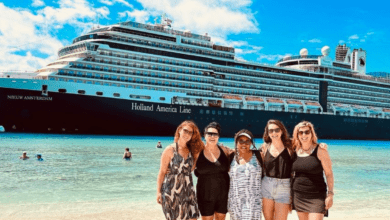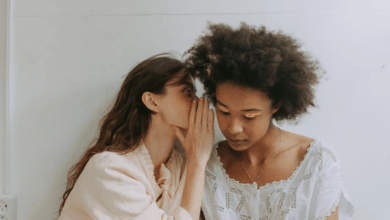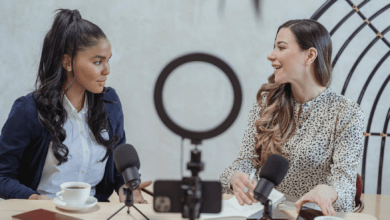
Lesbian bars have, historically, existed as rare, important spaces for lesbians to act naturally in public while also fitting in. There is nothing else like seeing a woman-only dancefloor, especially when a love song comes on and we dance in pairs. Nightlife, especially socializing in bars and clubs, is a culturally crucial rite of passage into adulthood for many, if not most, cultures across the globe. Seeing that translate into the lesbian world is satisfying because we don’t miss out on dating, dancing, and kissing in a culturally mainstream, identifiable public space without being gawked at for once.
My time in lesbian bars –especially when I was coming out 11 years ago– were some of the best memories of my life. But, as I head into my thirties, I aim for the Quiet Gay Lyf like Hannah Gadsby. The problem? There aren’t any sober spaces for lesbians. That doesn’t seem to matter because #SaveLesbianBars.
The decline in Lesbian Bars
In recent years, awareness has been raised surrounding the Lesbian Bar’s decline. Cruising is a podcast that debuted in 2021, where a group of lesbian and bi women visit the last remaining lesbian bars in the US. There are less than 25. While the pandemic is partly to blame, simply because of its impact on most small businesses, lesbian bars have been a dying breed way before COVID-19.
The women behind Cruising told me, in a 2021 interview, believe that the reason lesbian bars are dwindling isn’t all bad. Perhaps a little optimistically, they said, “We don’t have to go to a lesbian bar [these days] to be ourselves and be safe…We can go just about anywhere. At one point in our country’s not so distant history, lesbian bars were the only places for women to be gay. Now we have gay dating apps, and gay sports leagues, and gay social media. So the lesbian bar is less essential.” Believing the lack of lesbian bars is, in fact, a sign of LGBT+ inclusivity–rather than lesbophobic dilution–the move to “queer spaces” didn’t particularly phase them.
Cruising isn’t the only #SaveLesbianBars project that fails to see prioritizing inclusivity over lesbian exclusivity as the ironic obstacle to having lesbian-only spaces that it is. The Lesbian Bar Project, that aims to “celebrate, support, and preserve the remaining Lesbian Bars that exist in the United States,” states that “the label Lesbian belongs to all people who [feel] that it empowers them.” In fact, they believe that what makes a bar “uniquely Lesbian” is its “prioritization of creating space for people of marginalized genders.”
Despite the decline in Lesbian Bars, the New York Times claims there’s a post-lockdown revival, thanks to awareness initiatives like the Lesbian Bar Project and Cruising podcast. But if “lesbian” is merely a new trend for anyone “empowered by it” to try on, then are Lesbian Bars being saved, or is the post-lockdown Lesbian Bar just a “queer space” dressed up in flannel and wearing Birkenstocks?
I’m all for saving the actual Lesbian Bar, even if I’m attempting a more sober life these days, as long as we aren’t stopping at saving lesbian-only drinking events or spaces. Not only are #SaveLesbianBar initiatives diluting the definition of lesbianism so much that they’re not even advocating for lesbian-only bars as much as they are for general “queer” ones –which we already have enough of, and in which lesbians are not centered, celebrated, or even necessarily safe– much of the energy we could be spending on creating lesbian-exclusive non-drinking events is being hoarded by these all-inclusive “Lesbian” drinking ones.
Why are sober spaces important?
Lesbian-only non-drinking events and spaces are crucial because our community is more likely to develop substance abuse issues than straight people. Green and Feinstein, NCBI, identify “observation and imitation” as one cause for heightened substance use in the LGB. That is, our community has an issue with substances –think of pride events and gay clubs– because we want to fit in with the culture. Considering how vulnerable and desperate for community we are when we’re coming out, it’s only natural we throw the ball too far. We’re filled with excitement and nerves. We’re learning how to lesbian in a culture that uses alcohol to ease pain and forget our worries.
Homophobia is a leading cause of our community’s issue with substances. “The additional stress related to being a sexual minority could contribute to elevated substance use,” Green and Feinstein report. “Meyer (1995, 2003) has proposed a minority stress model for understanding LGB experiences in the context of stressors unique to the LGB population; after a review of the literature he concluded that higher prevalence of mental health disorders in the LGB population is caused at least partially by stigma-related social stressors.”
Should we, especially those of us becoming Older Lesbians–the role models–settle for alcohol-drenched spaces? Isn’t the sneaky, kinky, dingy ‘90s lesbian bar a little done? Isn’t it time to come out of the shadows, to deal with some homophobic trauma we’ve put on the backburner until we got through? Shouldn’t we be advocating for more daytime lesbian-only spaces, based on a variety of interests, rather than feeding our culture’s coping mechanism: heavy drinking and drugging? How about a lesbian youth center? Lesbian art clubs? An international Lesbian Activist Society, anyone?
Is the decline in Lesbian Bars the issue, or the lack of lesbian-only spaces at all? Us country lesbians might get a monthly pride night –for the entire LGBT community– at a pub 45 minutes away. But the city isn’t some lesbian utopia either; the closest thing to a non-drinking, lesbian-only event or space is almost always for “all queer women.” Controversial, but is the focus on saving the Lesbian Bar a distraction from creating any sober lesbian-only space? Didn’t Shane McCutcheon’s character on the OG L Word teach us anything? It’s actually not fun to drink and drug yourself until into a shell of yourself?
Drinking alcohol isn’t necessarily a problem but, when many cultures make it compulsory to partake in, society denies its negative impact. The LGB community is in even more denial about alcohol and drugs than the straights. But some of us are tired. We see the problems, we’ve been victims of them, and we’re ready to create something new. The expectation that we drink ourselves into oblivion –to the point of being in unsafe spaces or making risky decisions in order to “fit in”- is part of Lesbian Bar culture.
Will a post-lockdown Lesbian Bar revival merely contribute to the evident substance abuse issues among lesbians? Could the energy put into initiatives like the Lesbian Bar Project be better used towards anything actually lesbian-only, even *gasp* sober? Is the aversion to non-drinking lesbian-only events among lesbians a symptom of residual shame? Why do so many of us drink with, and at, “Pride”?





